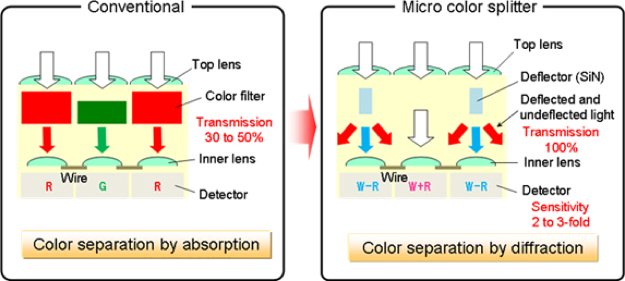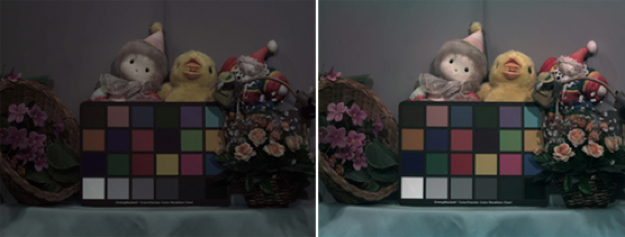
Small digital cameras have an inherent problem: The small sensors they use can’t capture as much light as the ones found in larger cameras. Sure, all digicams – even smartphones – perform well under bright lights, but don’t expect them to deliver the same image quality in low light. But a new technology developed by Panasonic could improve the color and light sensitivity of digital camera sensors in the future.
Just about all of today’s digital cameras use something called a Bayer filter in conjunction with their image sensors to create color images. The Bayer filter is a mosaic pattern of 50-percent green, 25-percent red, and 25-percent blue filters that allow only that color of light through to the image sensor. The biggest limitation of the Bayer filter is that each pixel can only record one of those three colors – this raw output is called a Bayer pattern image. In order to then create a color image, the camera must process the captured data to interpolate a color value for each pixel. There are alternatives to the Bayer filter, but none are in very wide use.
The electronics giant claims that the Bayer filtering method blocks 50-75-percent of light from ever reaching the sensor. In order to capture the lower light input, a sensor’s “volume” must be turned up, which leads to lower image quality due to noise. Panasonic’s new filtering method replaces the mosaic pattern arrays with tiny “micro color splitters.” The color splitters diffract light into various combinations of white, red, and blue that can be converted to standard color values via special algorithms. Their claim is that the new technology would double the color sensitivity of image sensors. (See Panasonic’s chart above.)
According to itworld.com, Panasonic currently has no timeline for commercializing the new technology. However, they say that it can work with the most common CCD and CMOS sensors and can be manufactured using existing production techniques.



